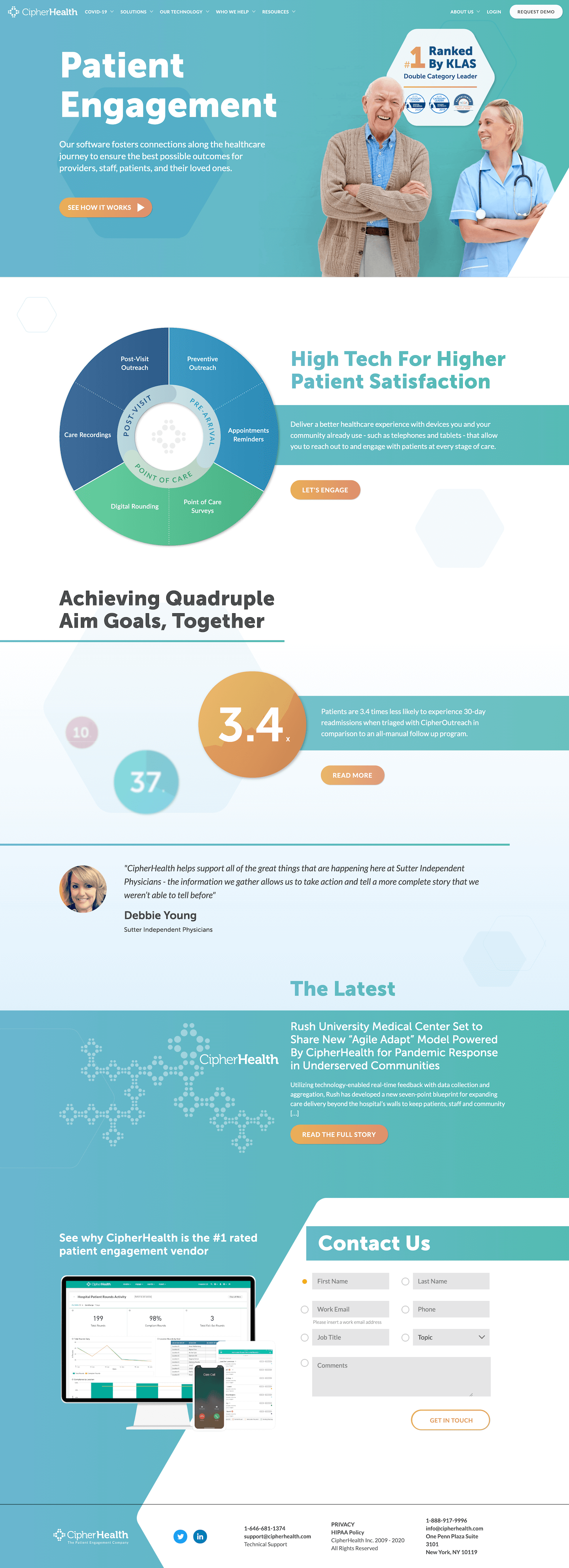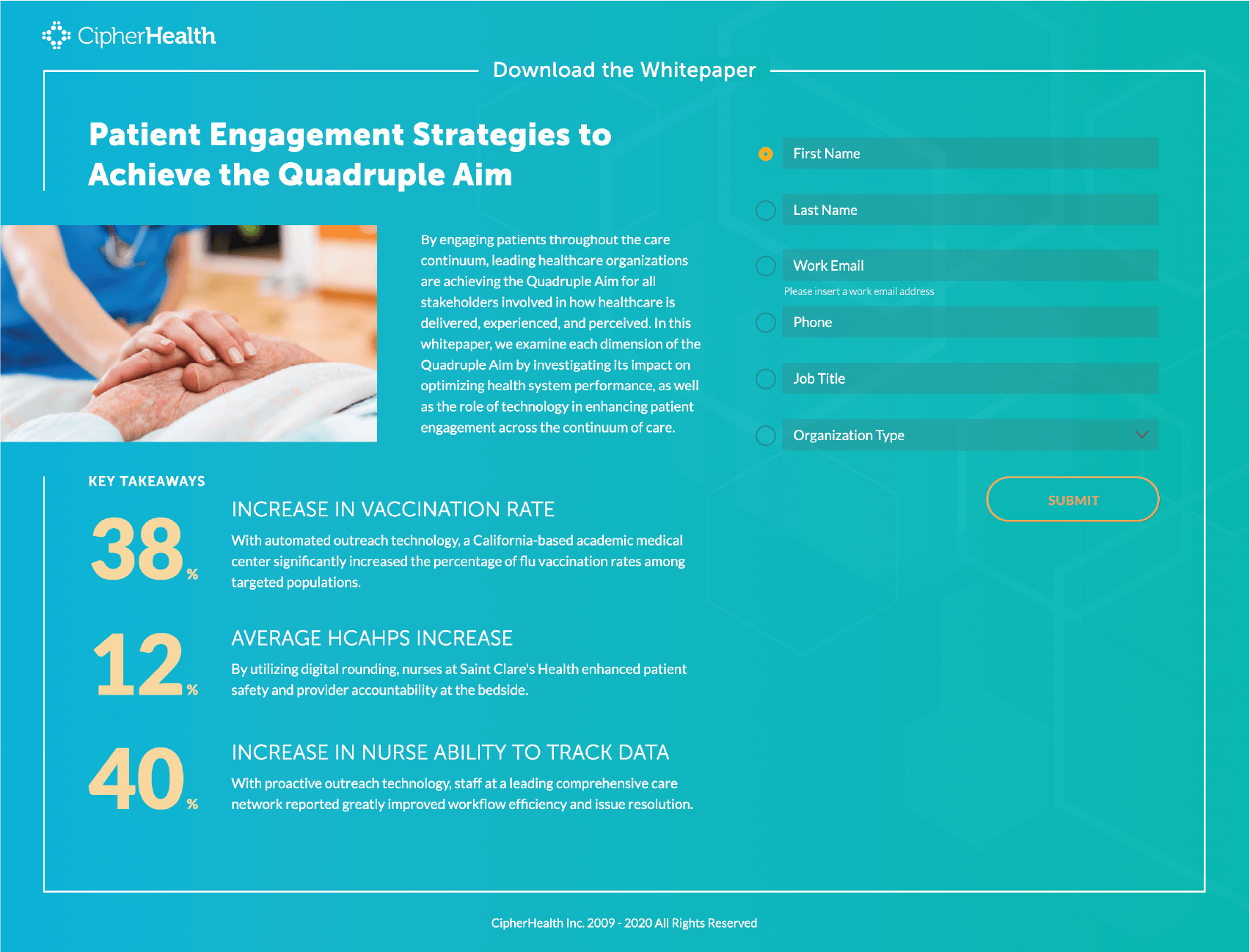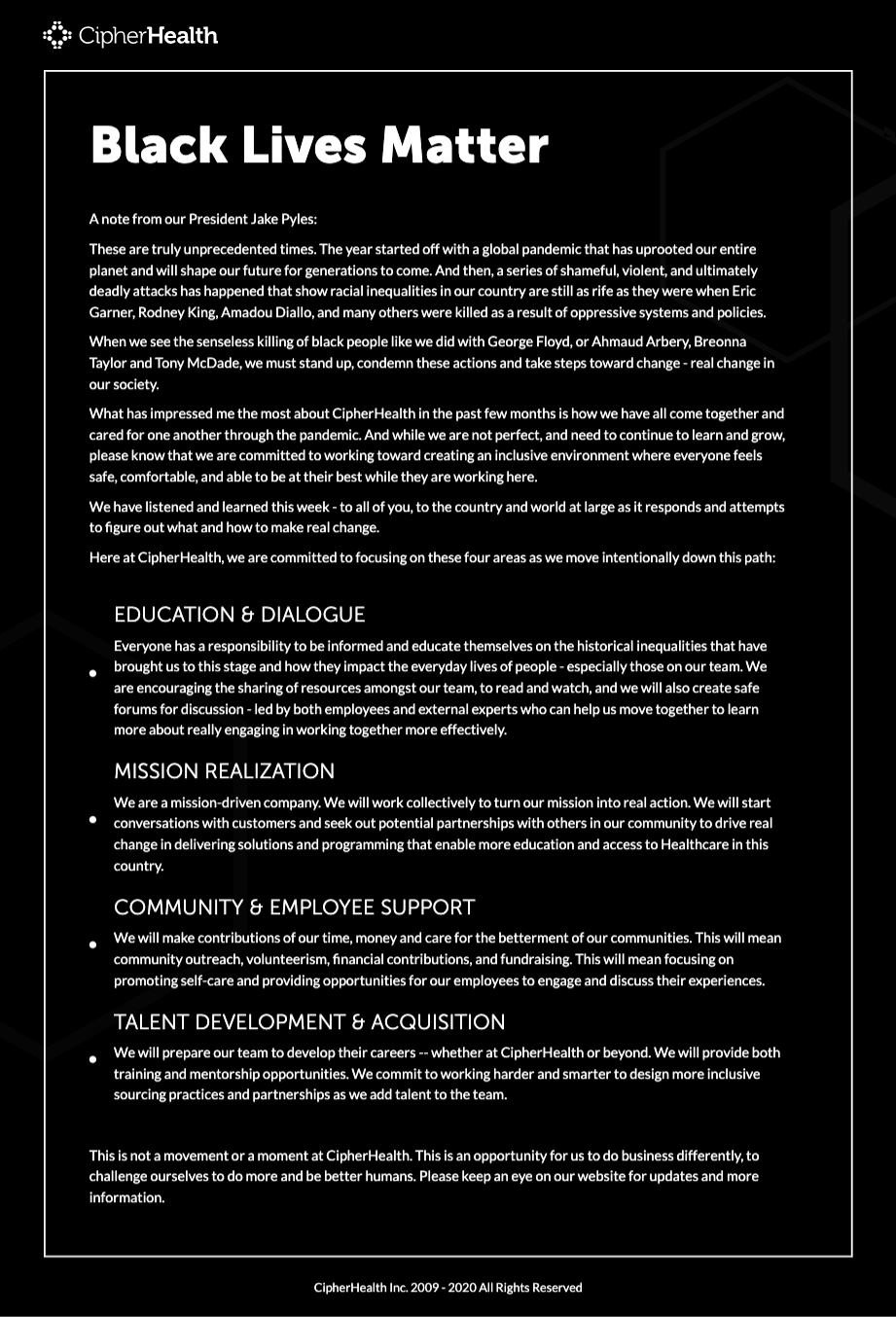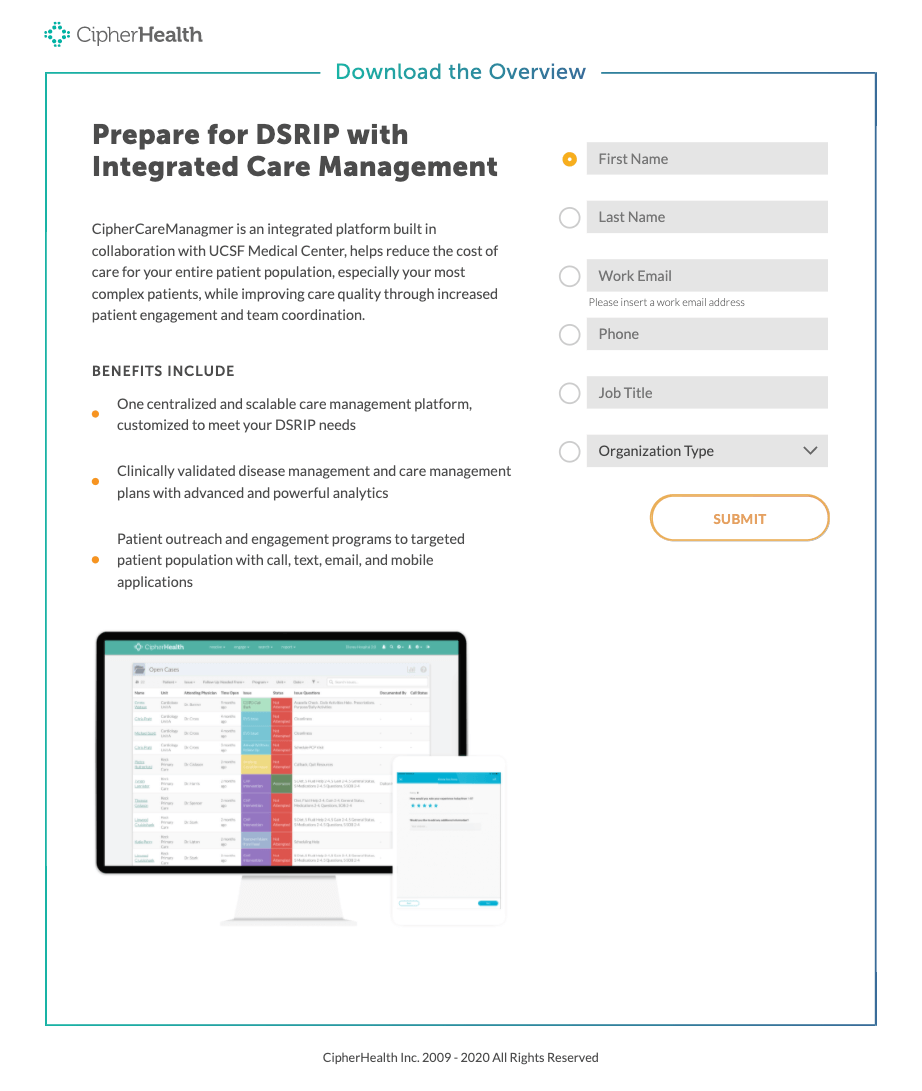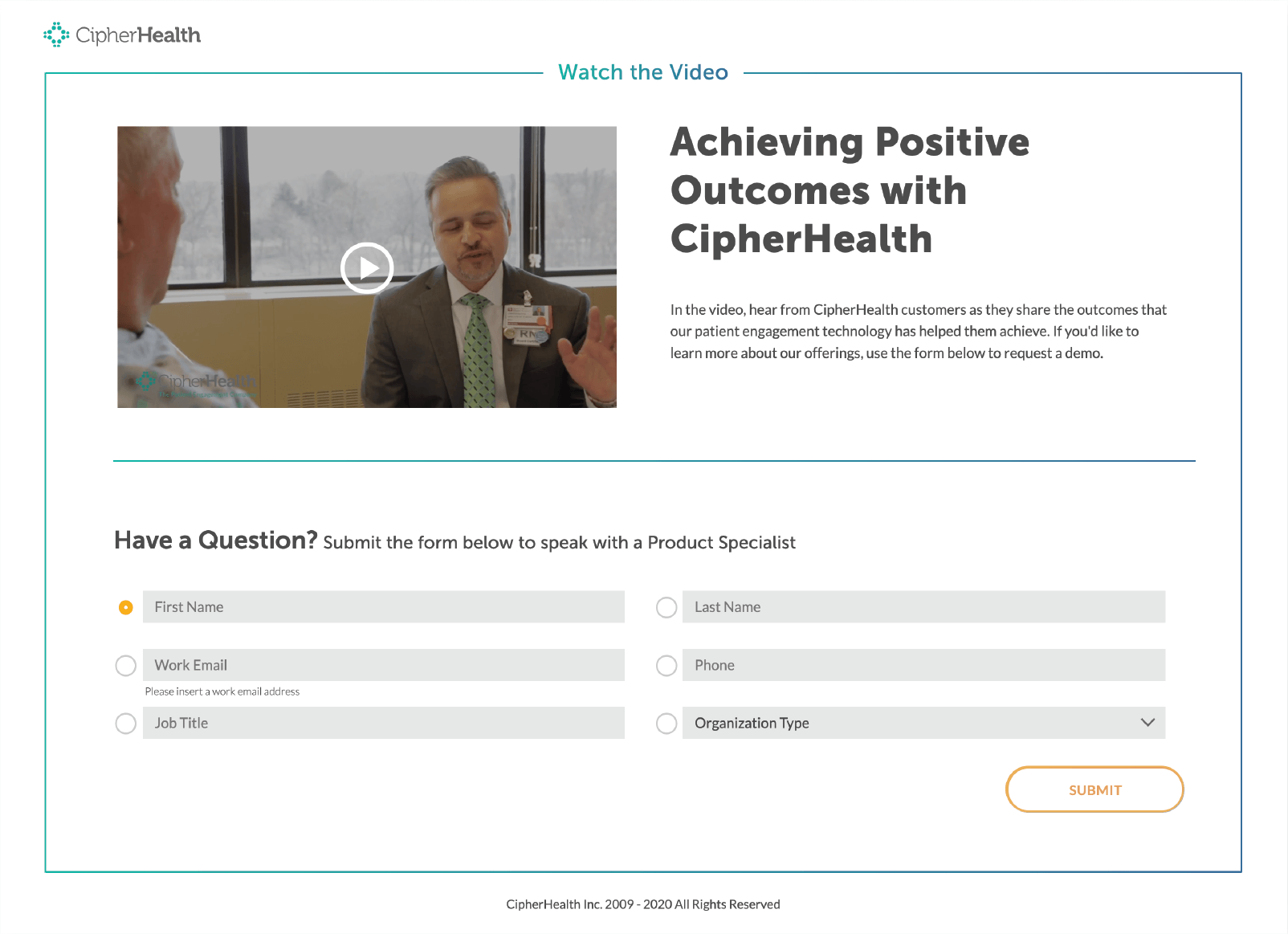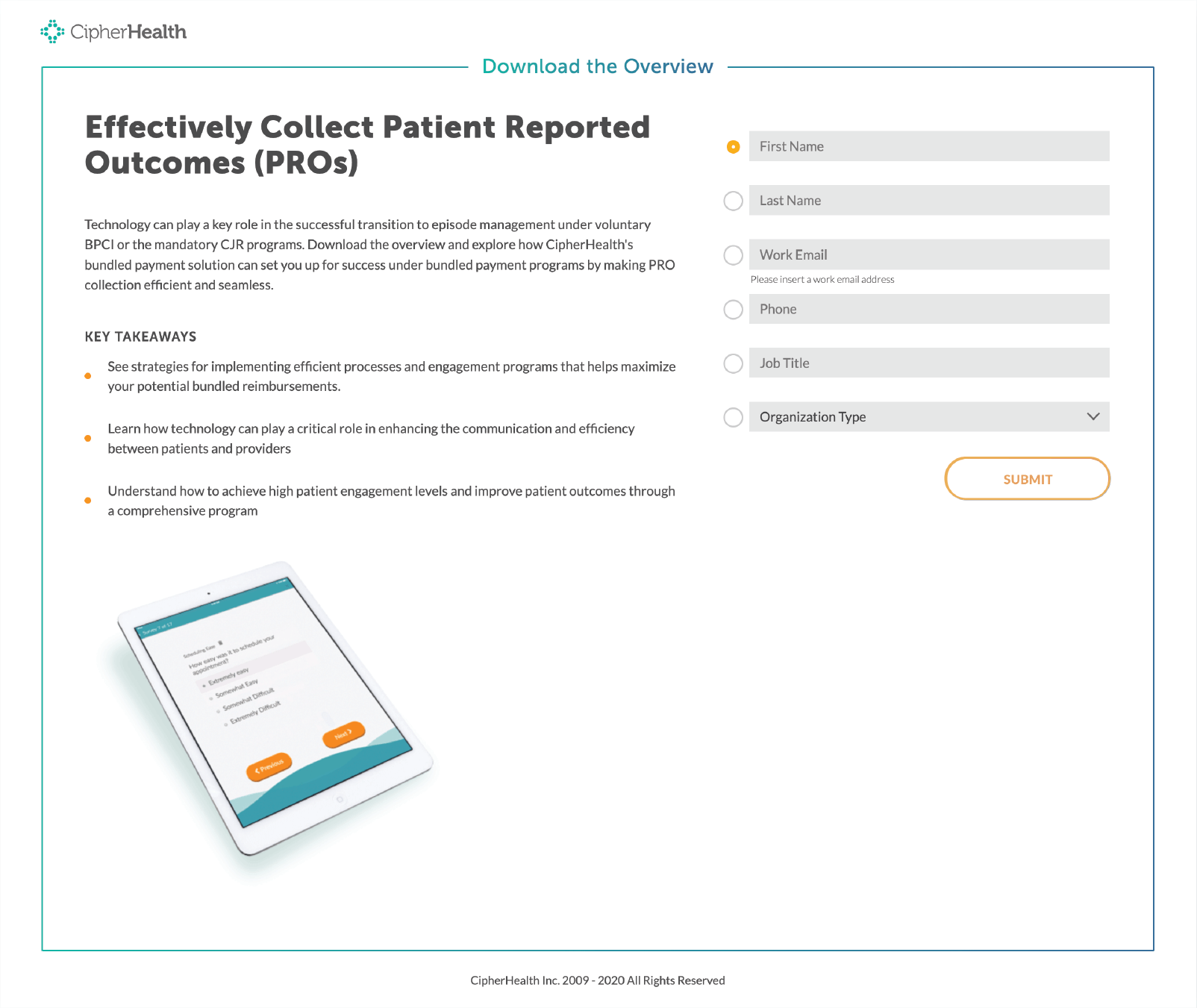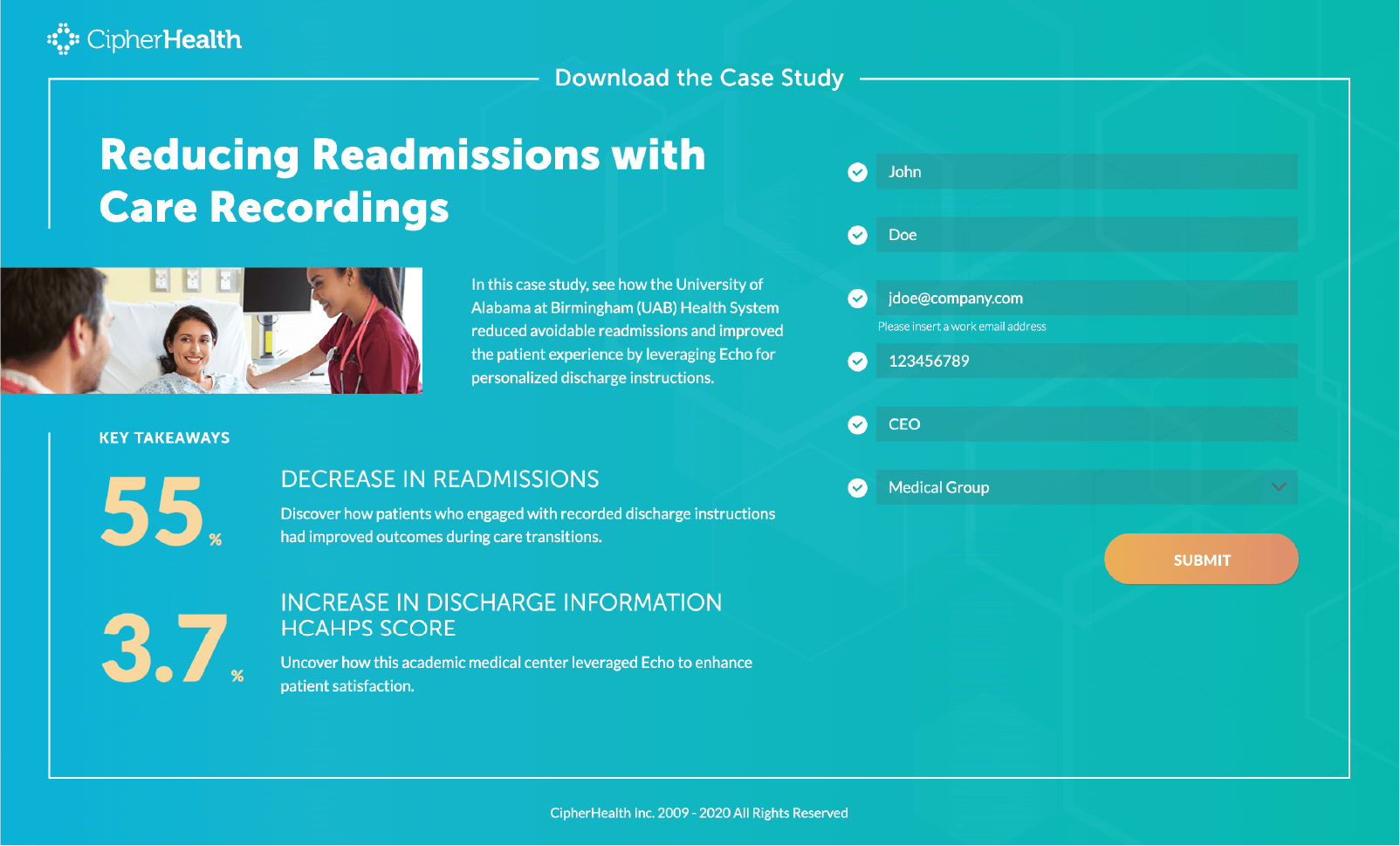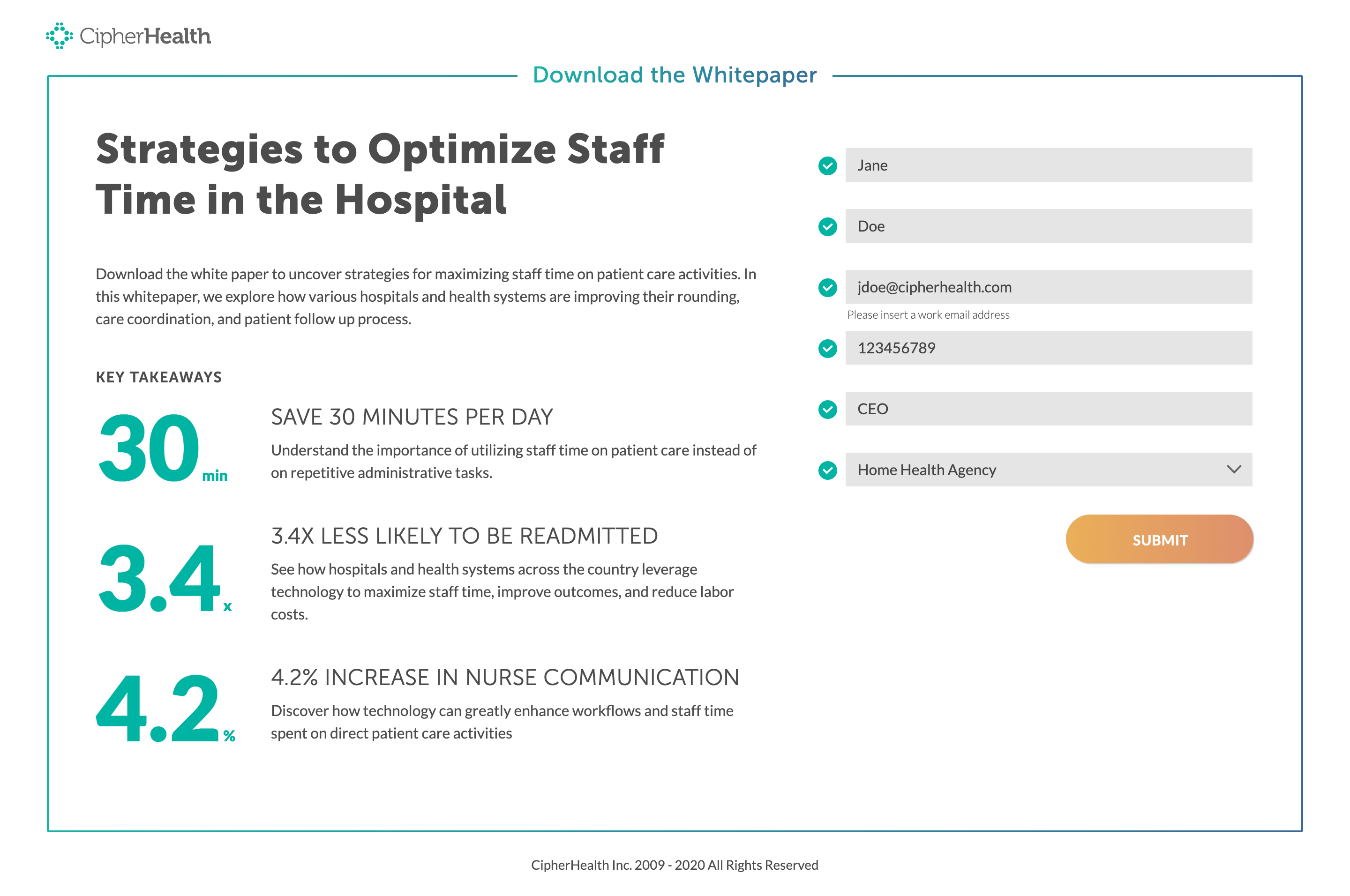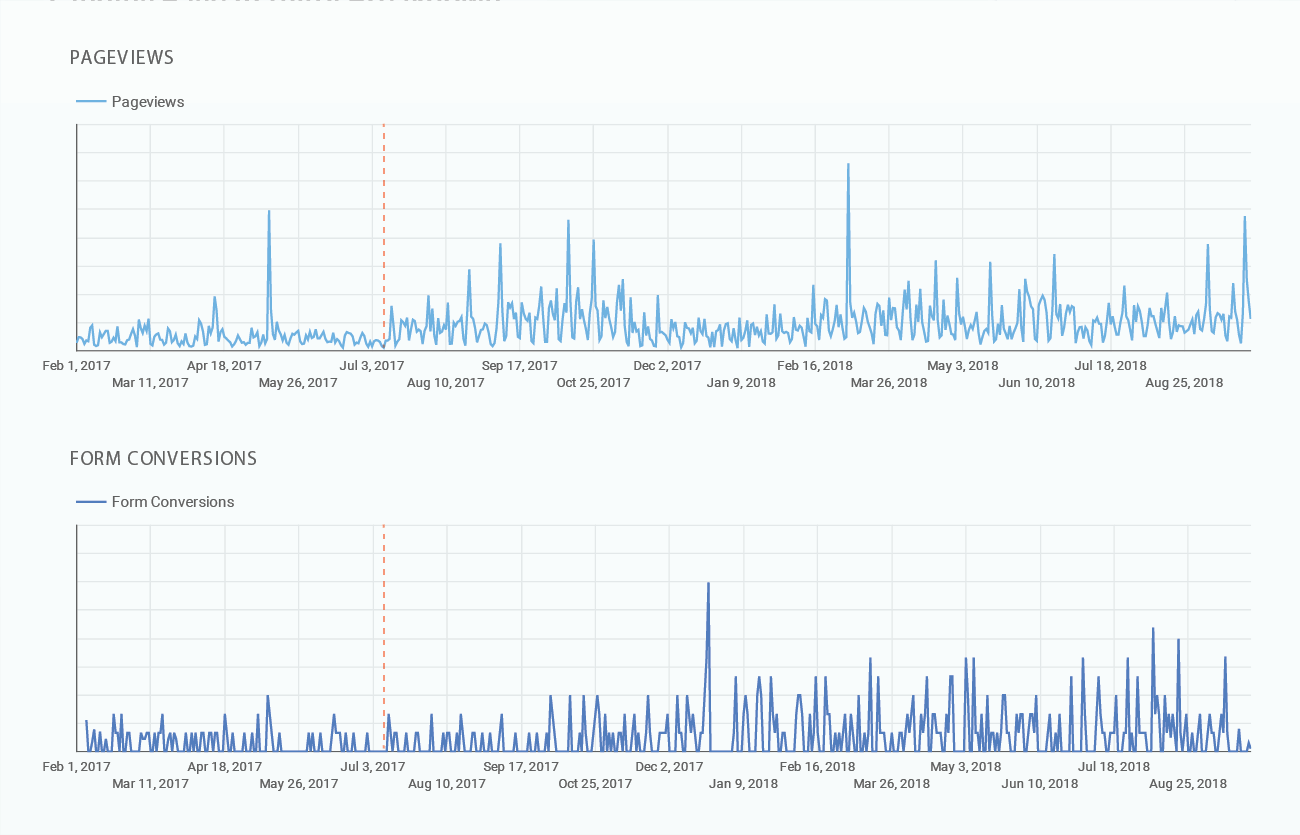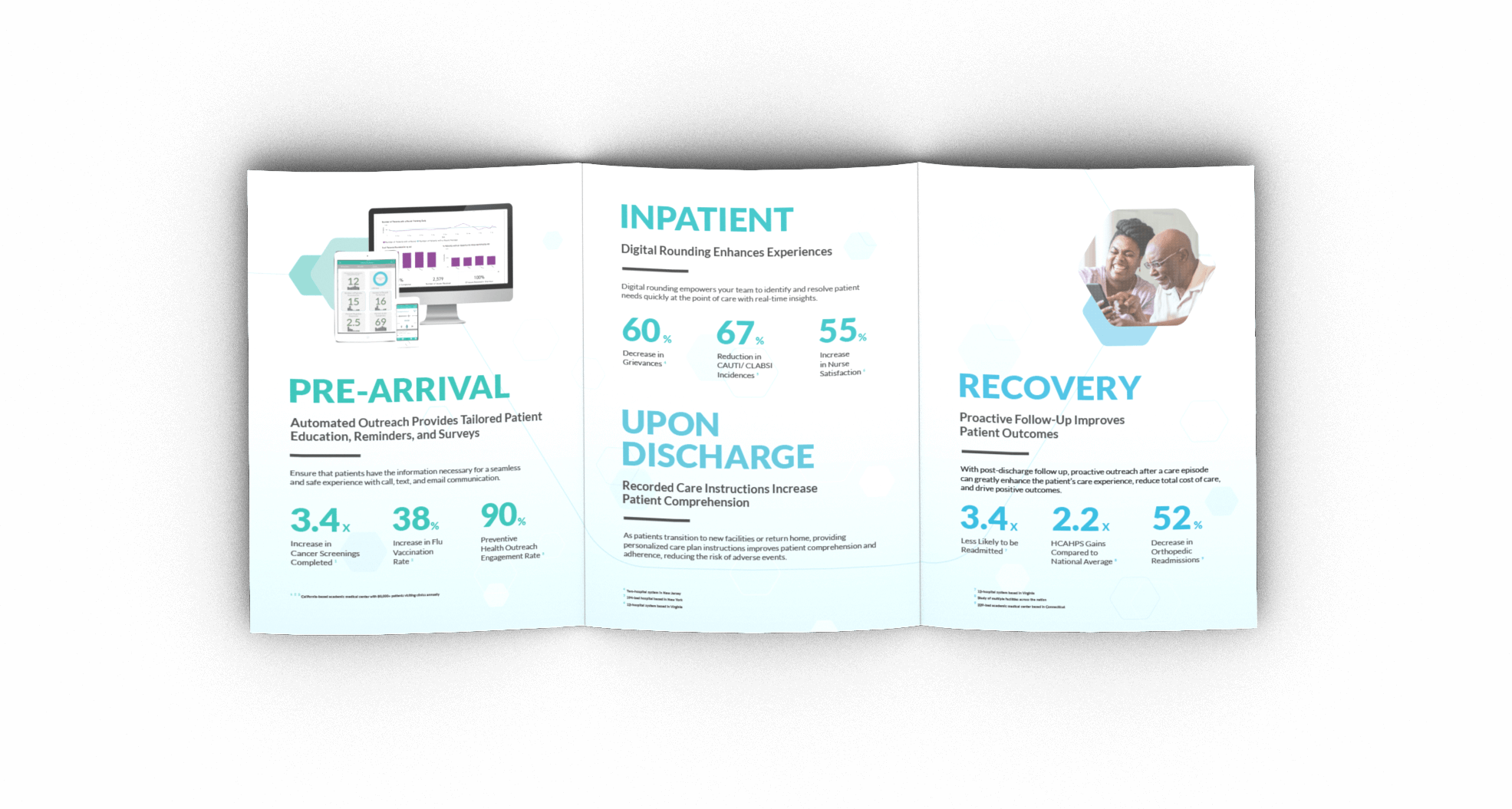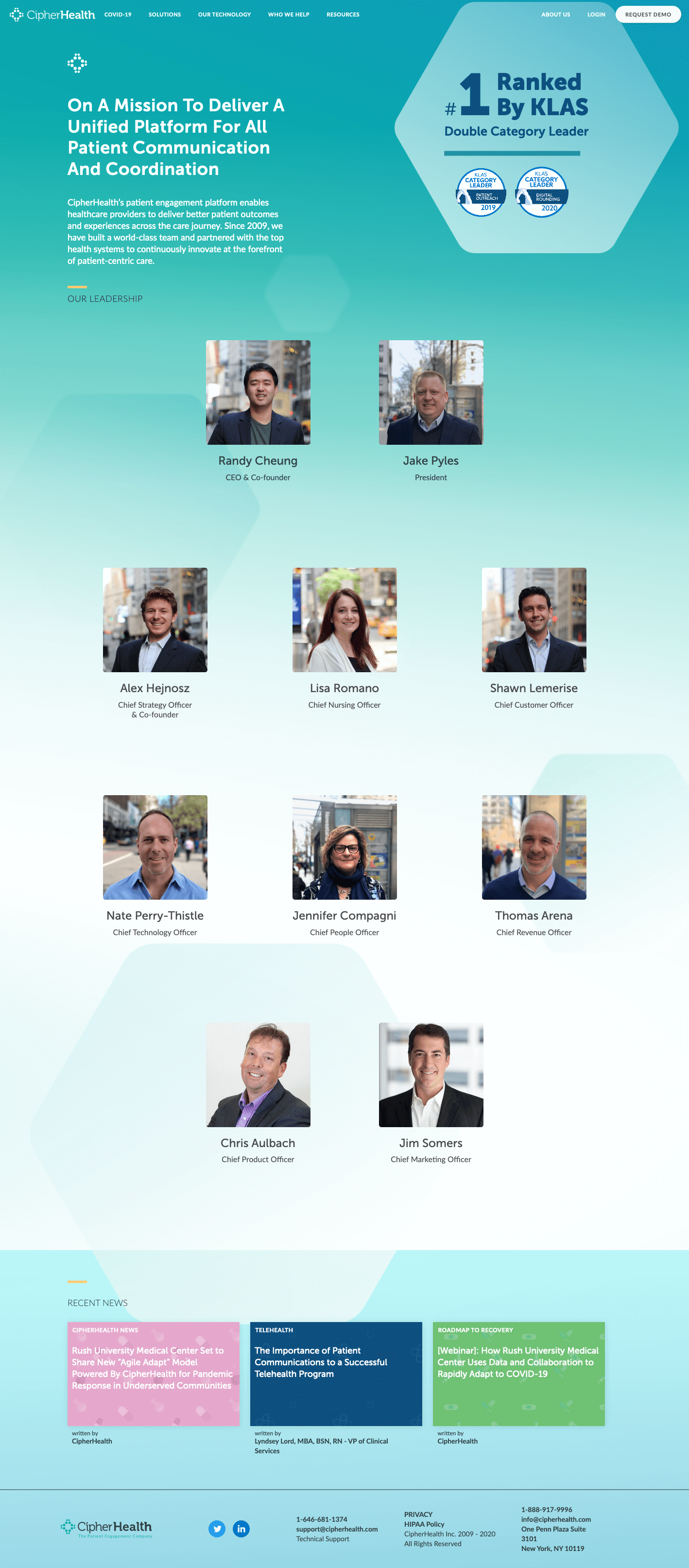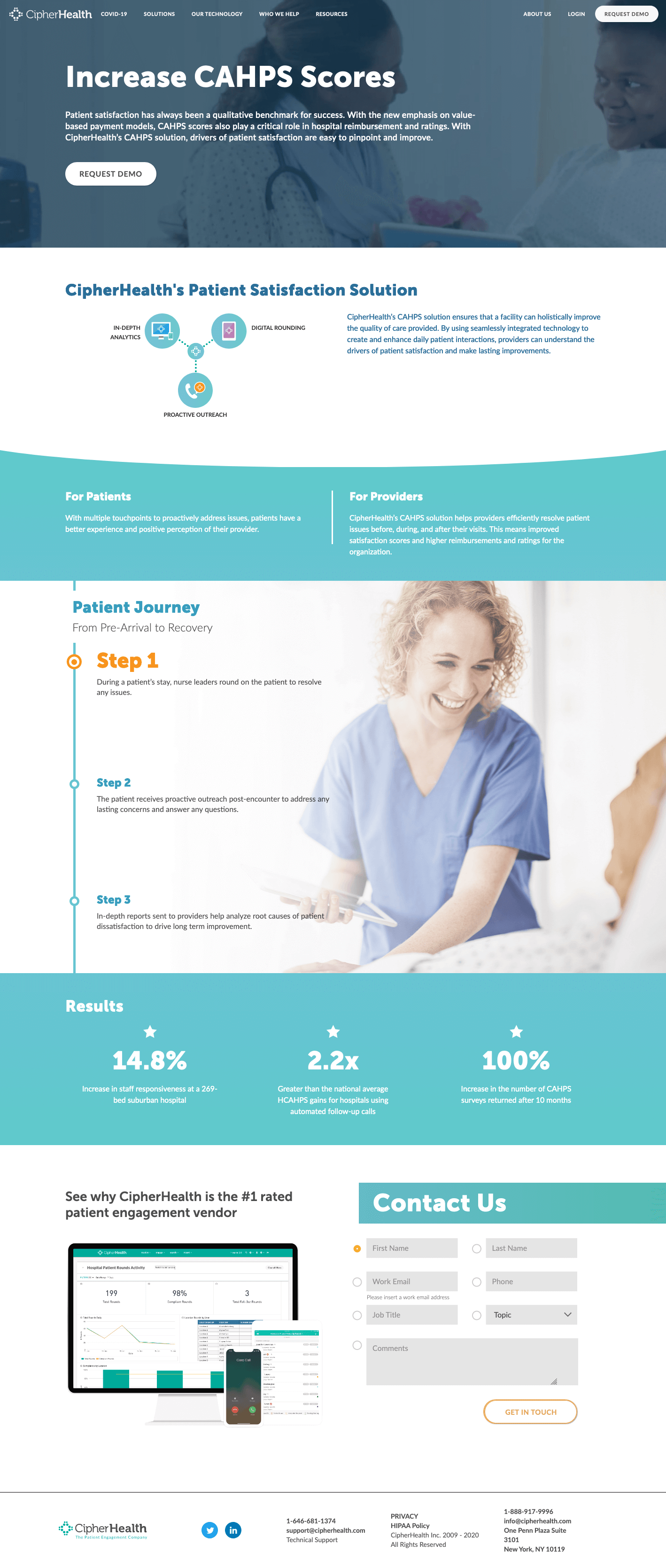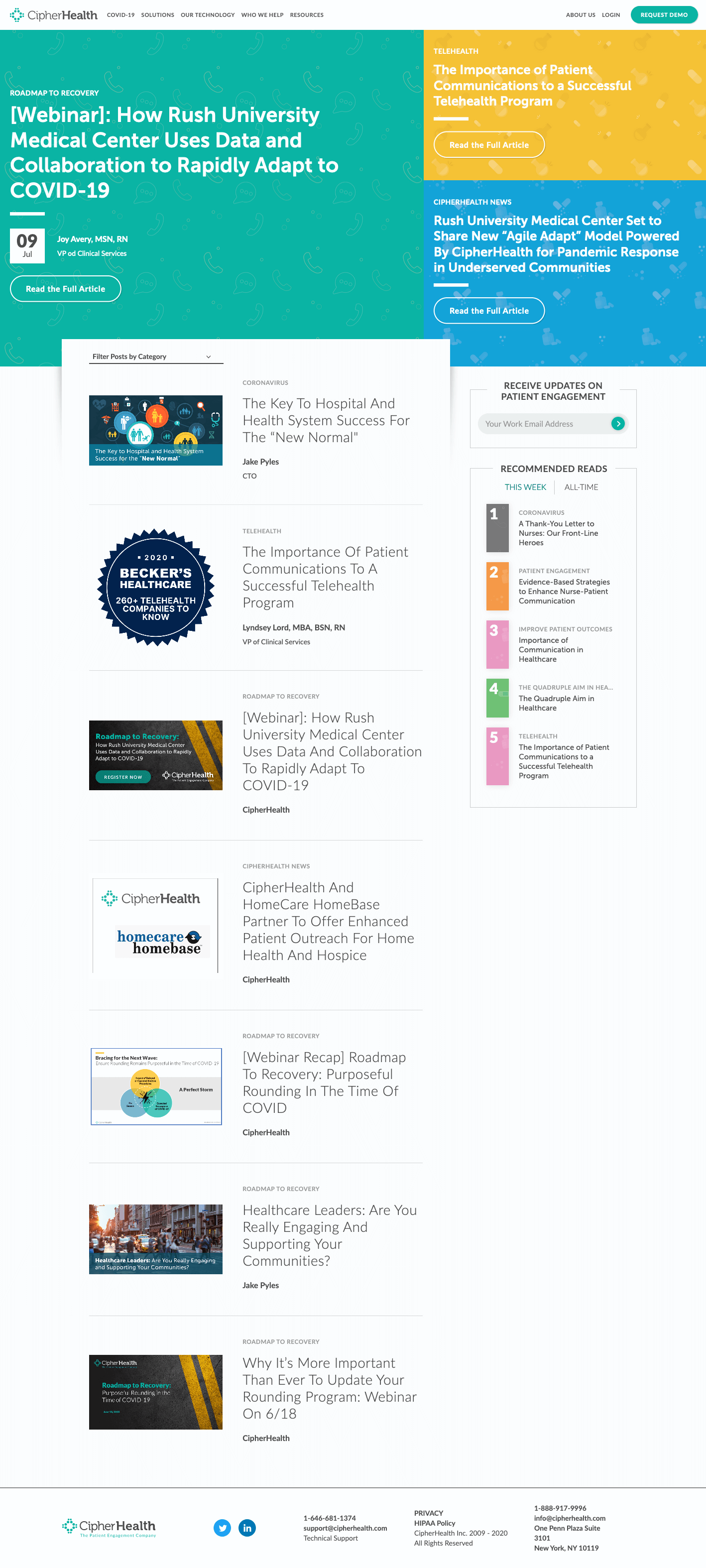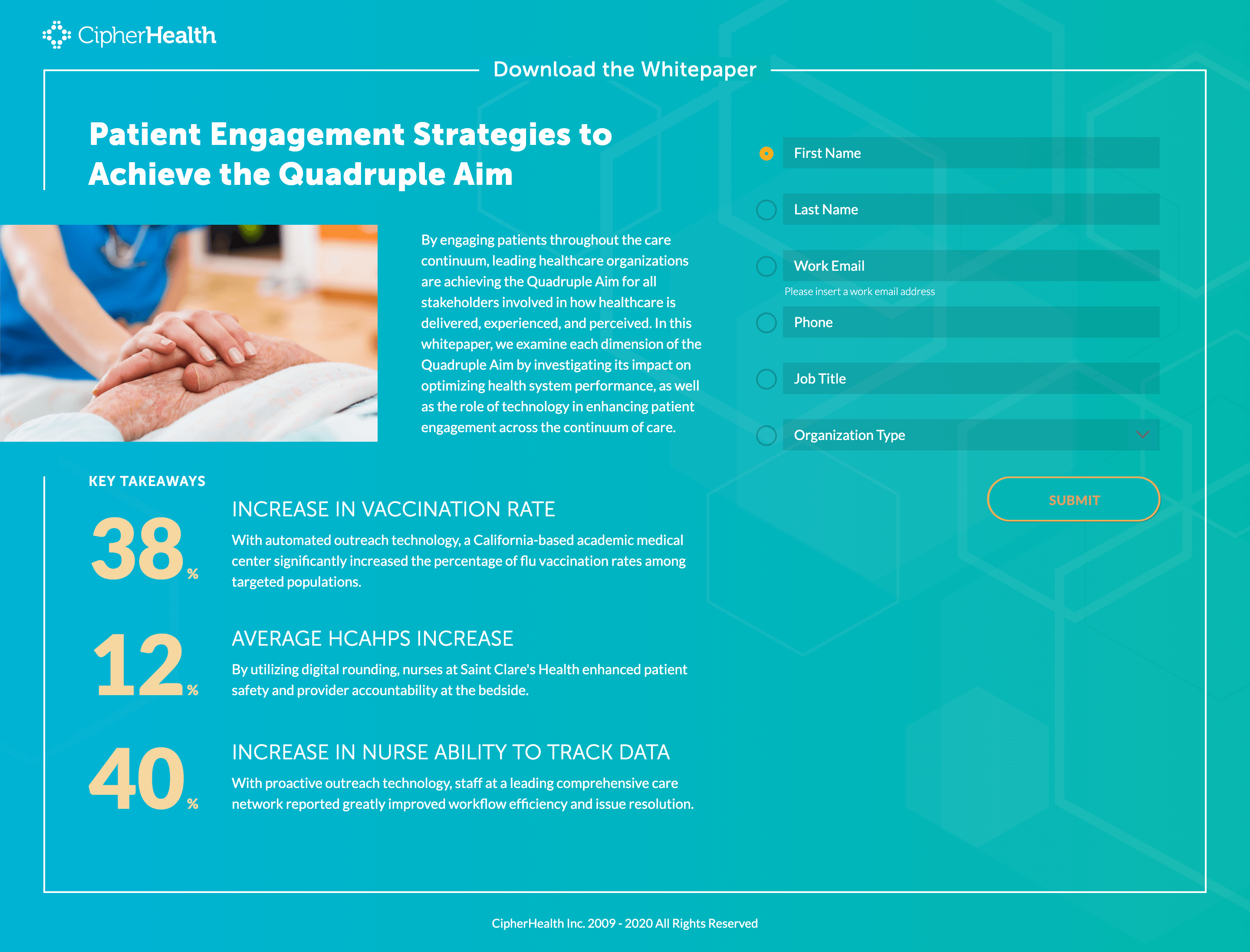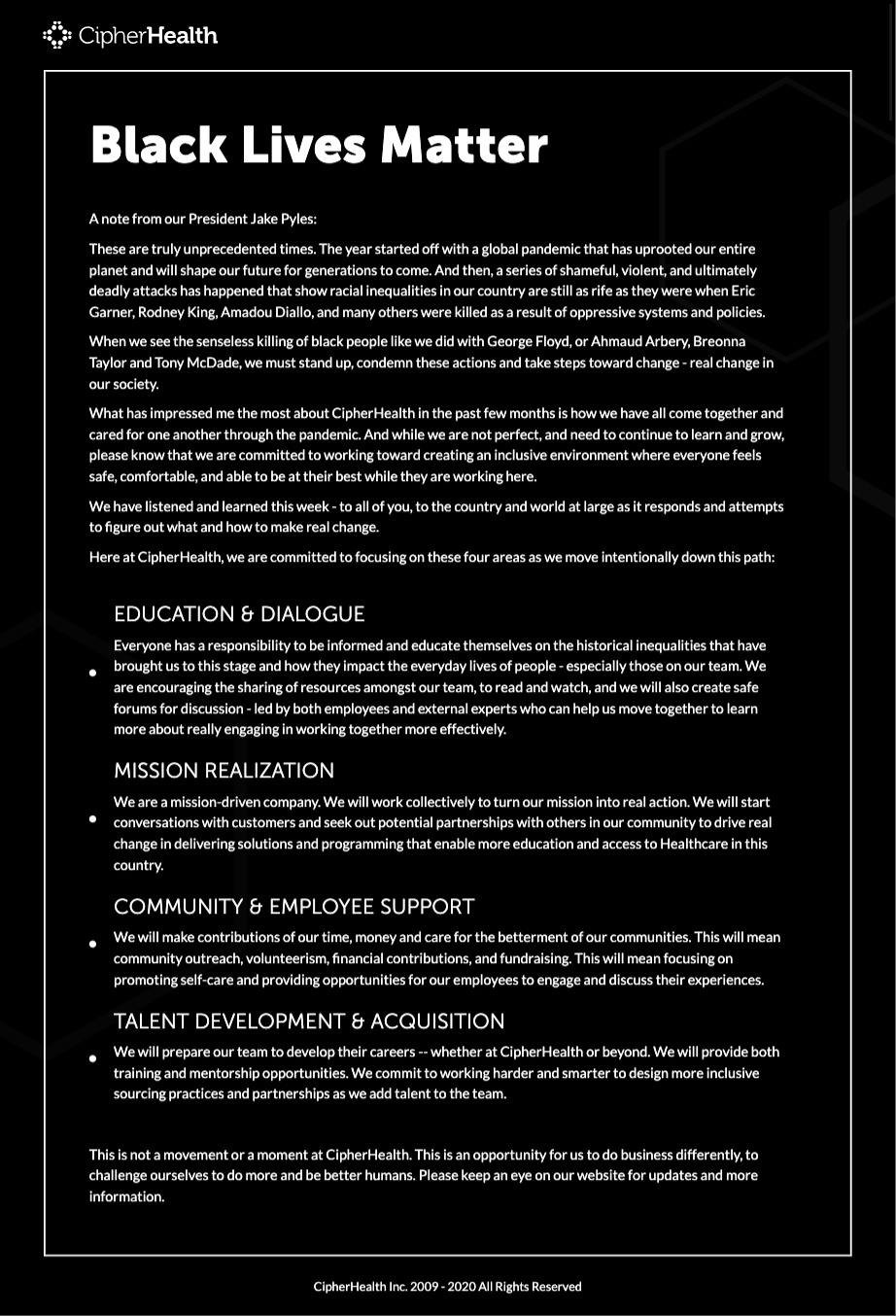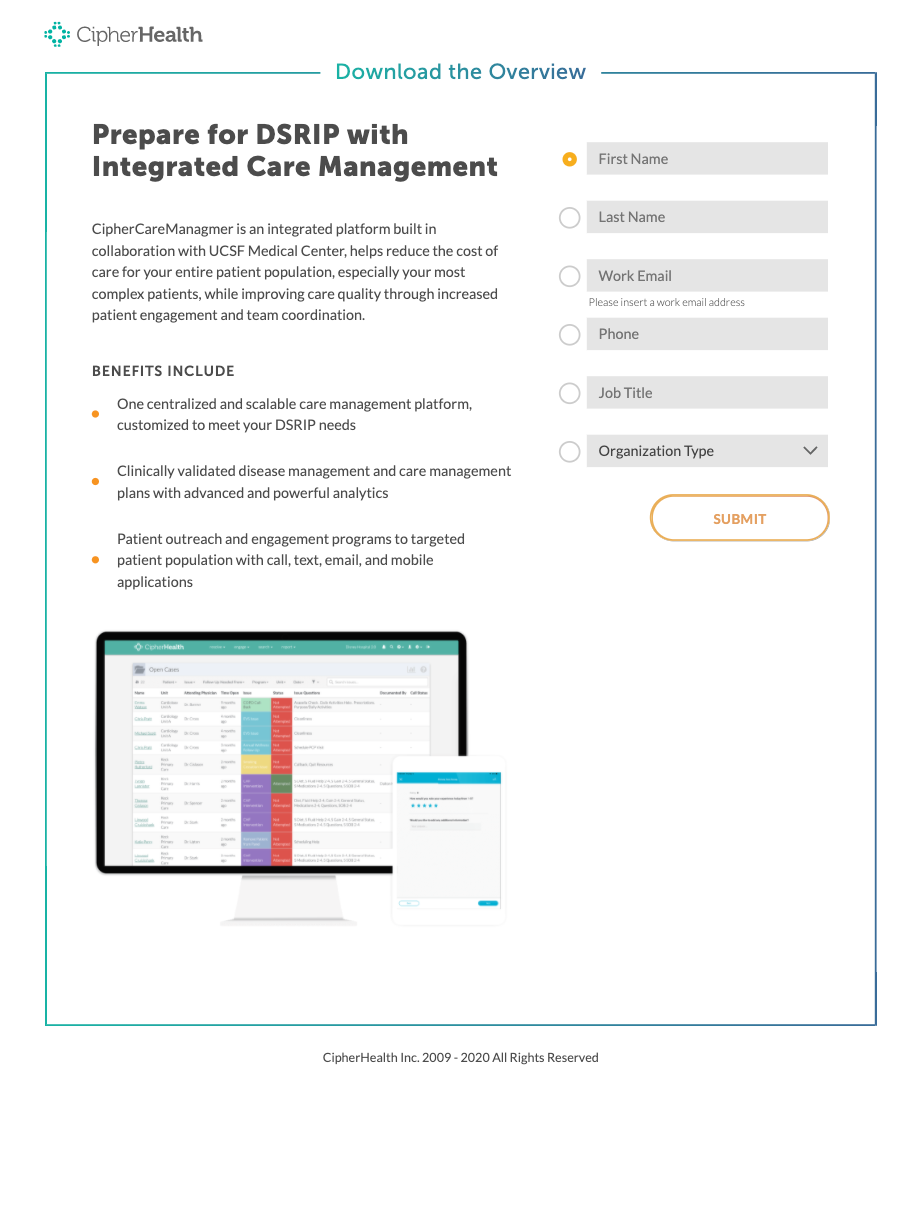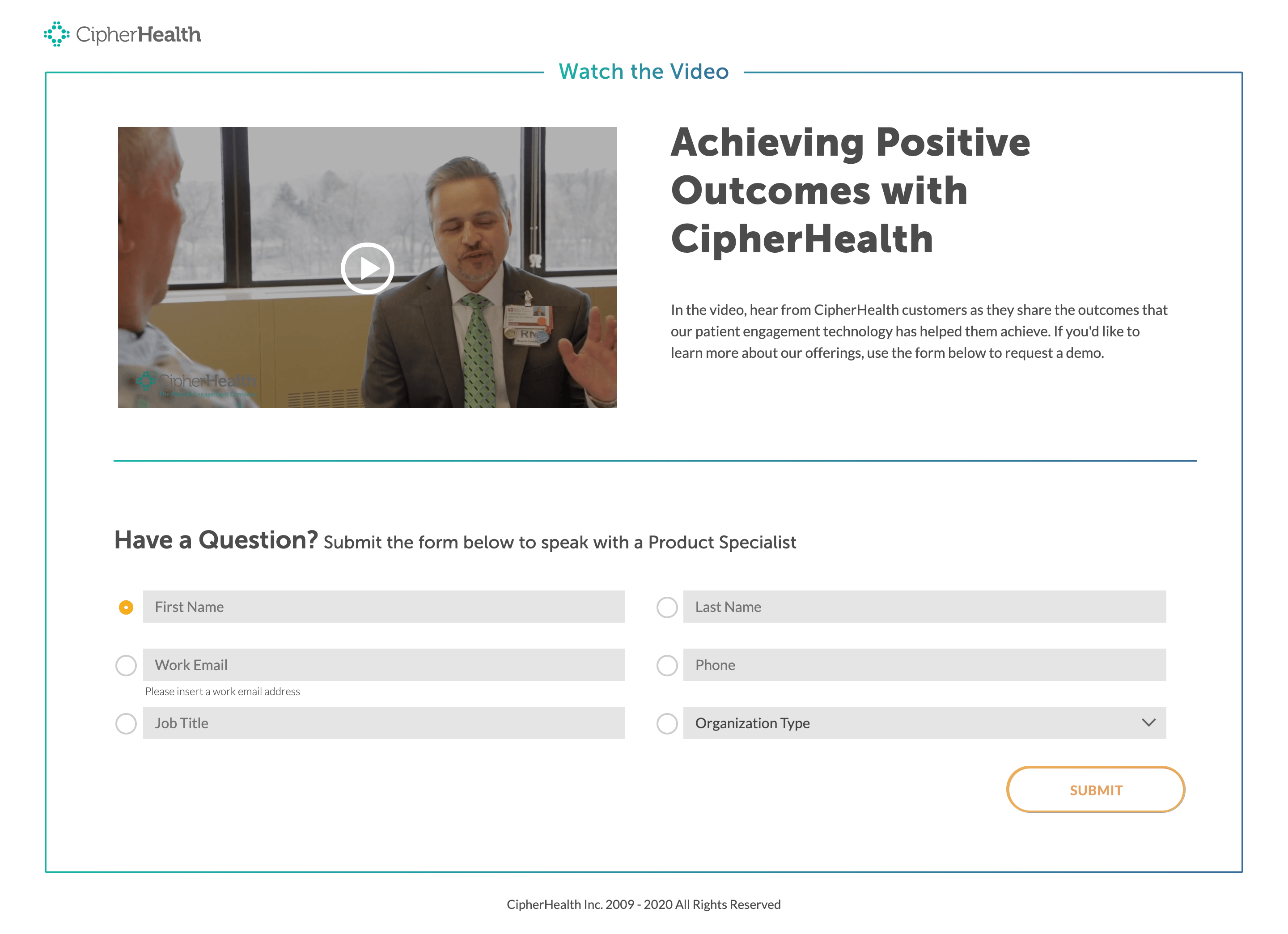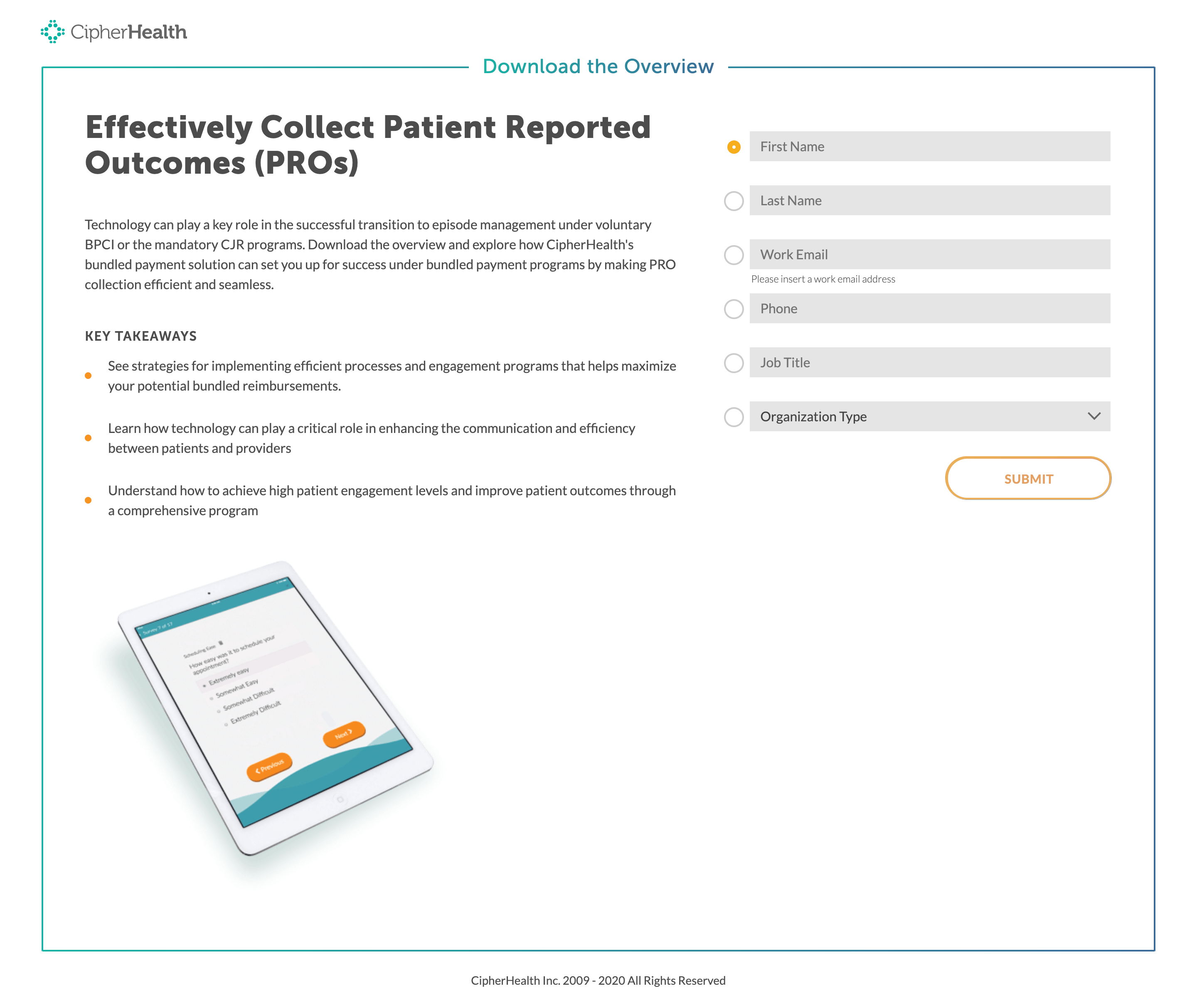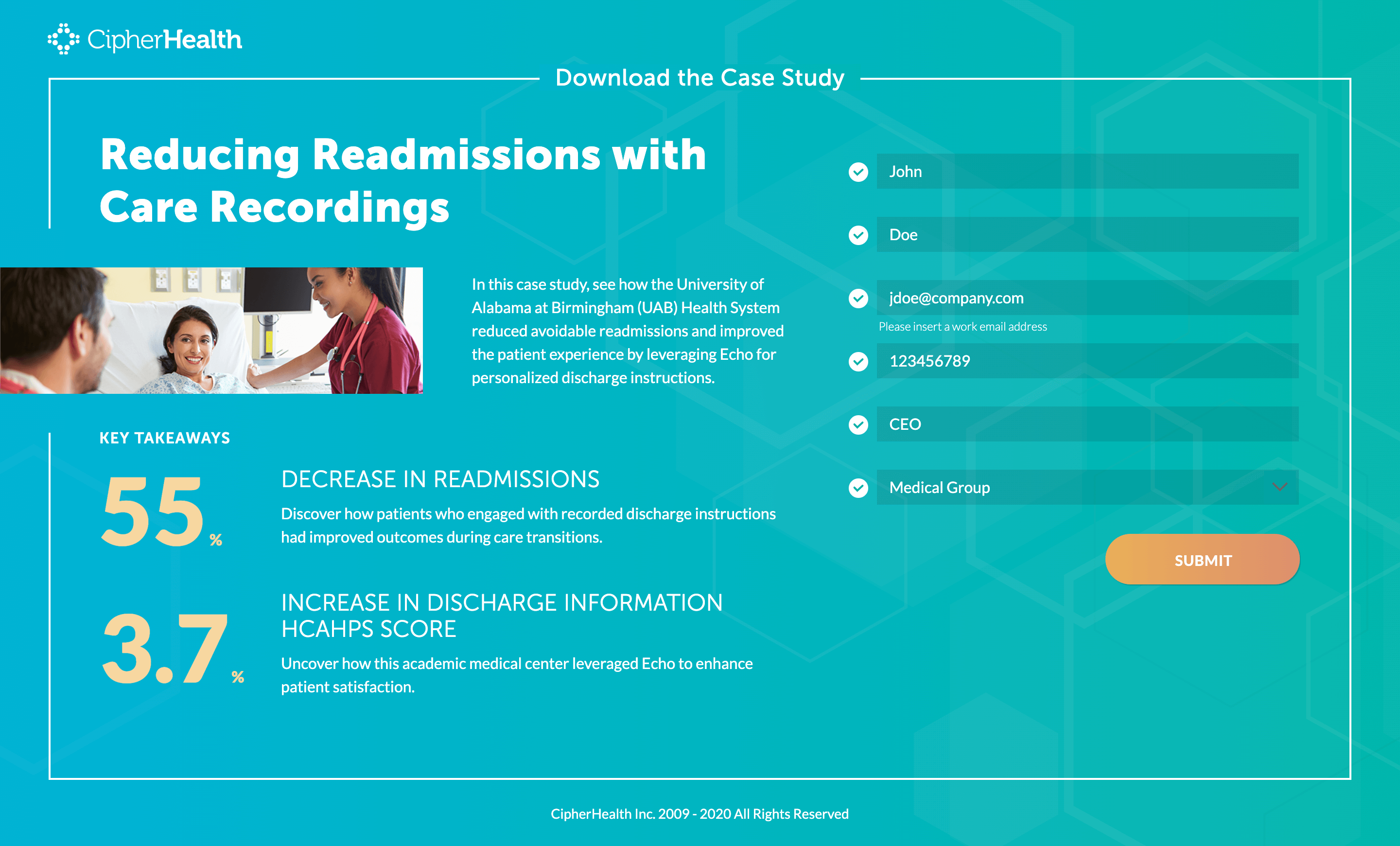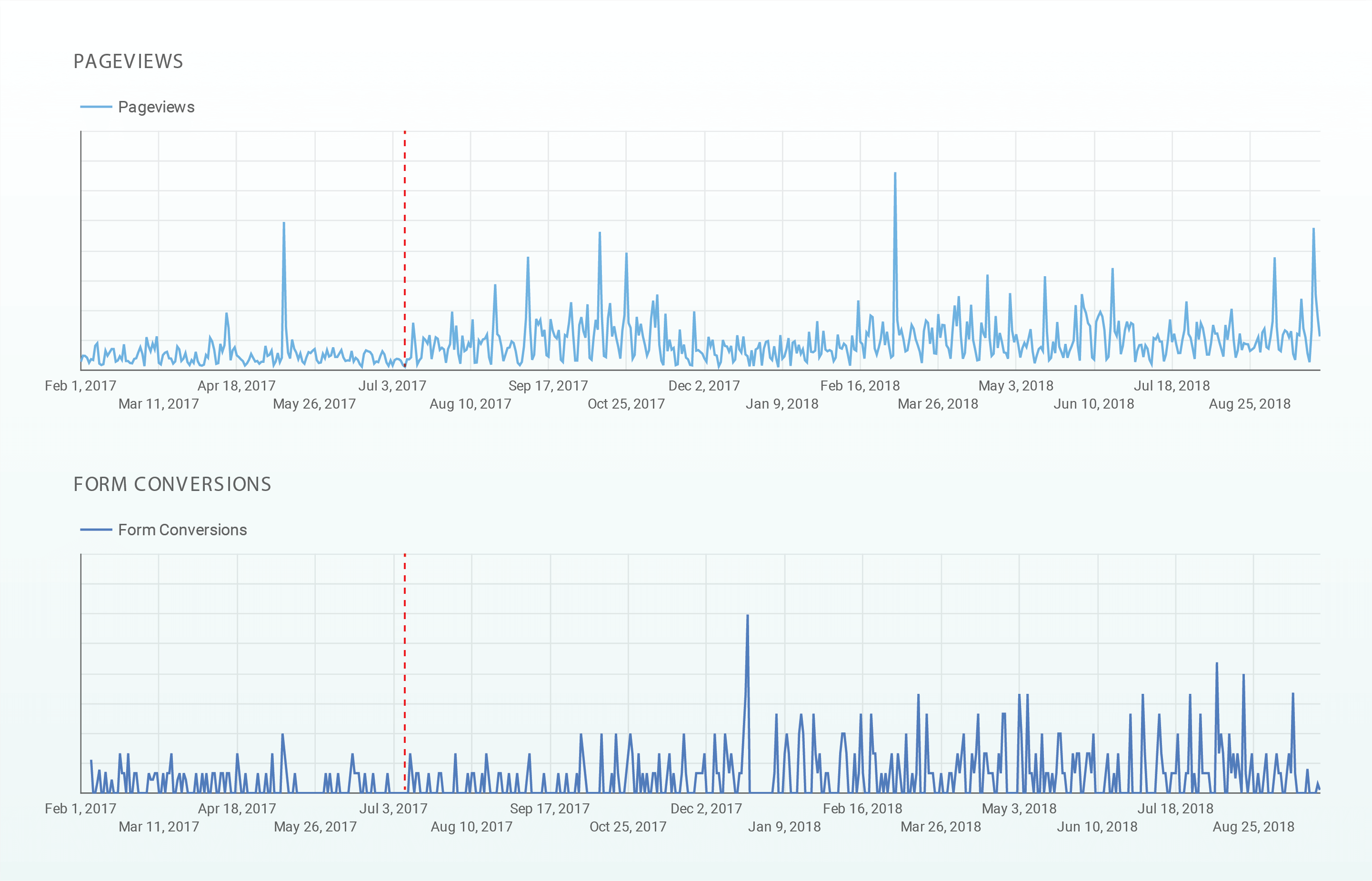Building thewebsite
At the center of CipherHealth’s online experience is its website, connecting hundreds of different resources and publications, and supplying essential information regarding CipherHealth, its team, and its core offerings.
The visitor-facing design of the website prioritized a gradual delivery of content. It started on a visually compelling homepage and then evolved into more detailed product offerings, encouraging visitors at various stages of relationship with the company to engage.
On the team-facing side, WordPress was used, which allowed content creators easy editing of the site’s copy and imagery, as well as access to an array of publishing tools.
That setup, paired with a design that prioritized leveraging content created internally, allowed the website to offer a rich experience, while helping position CipherHealth as a thought leader in the healthcare industry.
wireframe
About Us
About Us
Solution
Solution
Blog
Blog
In addition to WordPress, Salesforce’s Pardot was also employed, in order to help generate, manage and track leads, as well as to create targeted content such as forms and landing pages.
Since the template’s creation, hundreds of different landing pages have been published, while conversions generated through them more than duplicated, relative to the time before it was in use (see stats below).
Along with the web pages, robust tracking capabilities were implemented, using a combination of Google Analytics, Google Tag Manager, Google Data Studio,and Salesforce Pardot.
Charts such as the one seen here allowed the team to adopt a data driven brand strategy. Through the data seen here, we were able to visualize the impact that the landing page template above had on website conversions (left and right of the dotted line).
PrintMaterial
4Multiple pieces of print collateral were developed for the marketing team. They have been widely used by marketing, sales, and account management in a variety of industry events and client presentations.

A couple of such pieces were the Patient Journey brochure and the Insights brochure. Both were developed through an iterative process that involved multiple stakeholders.
While marketing would mainly provide input on the piece itself, other departments were instrumental in making sure the narrative felt relevant to their target audiences.



